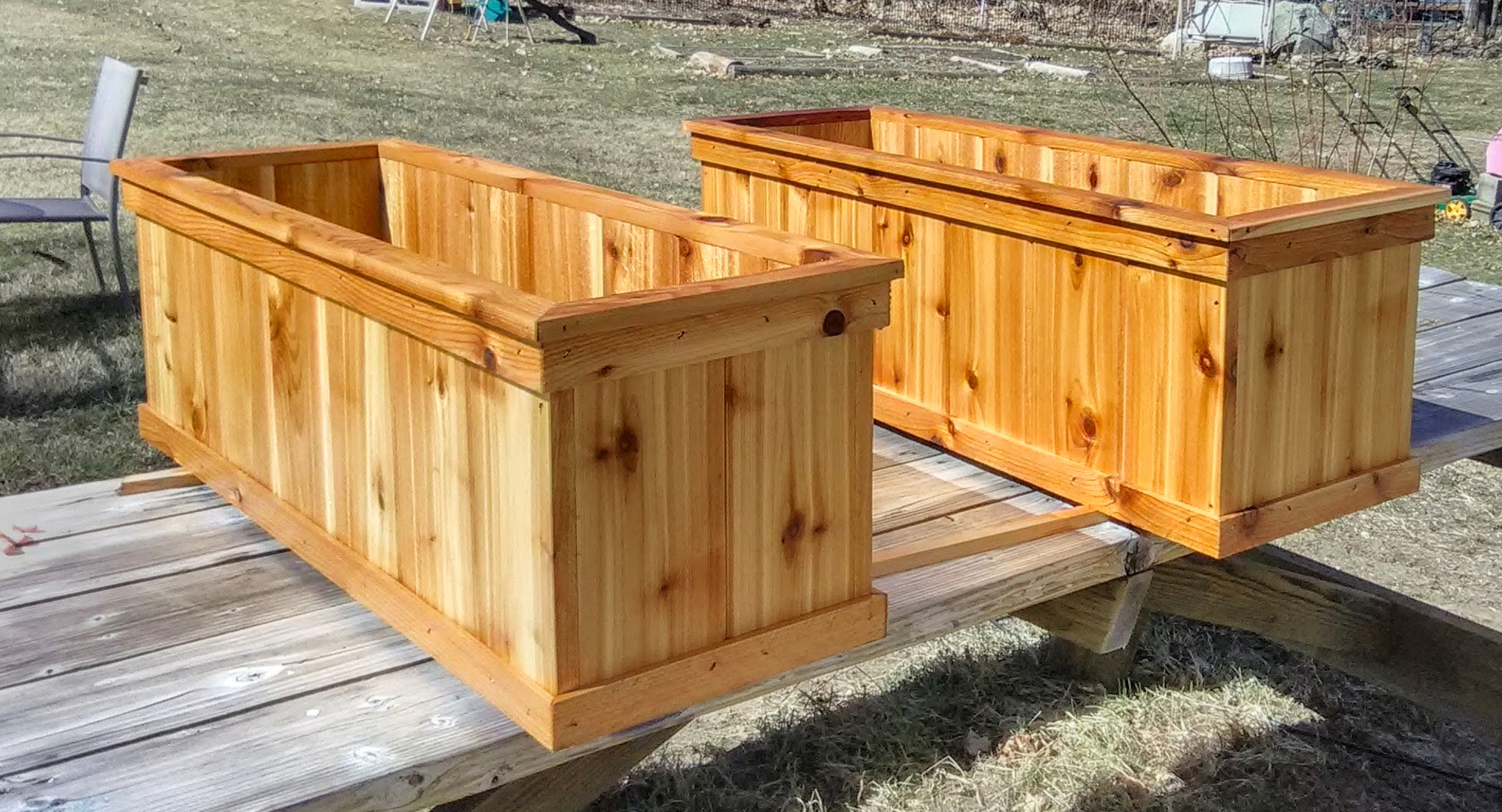Step into the world of cedar wood planter boxes, where aesthetics meet functionality. Crafted from the naturally durable and aromatic cedar wood, these planters offer an elegant touch to any outdoor space while providing an optimal environment for your cherished plants.
In this comprehensive guide, we delve into the design, construction, and maintenance of cedar wood planter boxes. Discover the best plant choices, learn essential care tips, and uncover techniques to extend the lifespan of your planter, ensuring it remains a beautiful and thriving haven for your greenery.
Design and Construction

Cedar wood planter boxes are popular for their durability, natural beauty, and resistance to rot and insects. They can be designed in various shapes and sizes to accommodate different plants and spaces. Common shapes include rectangular, square, and octagonal, with sizes ranging from small tabletop planters to large raised garden beds.
To construct a cedar wood planter box, you will need cedar planks, wood screws, a drill, a saw, and measuring tape. Begin by cutting the planks to the desired length and width for the sides and bottom of the box. Assemble the sides by attaching them to the bottom using wood screws. Reinforce the corners with additional screws or metal brackets for added strength.
Customization
Cedar wood planter boxes can be customized to fit specific needs or preferences. For better drainage, drill small holes in the bottom of the box. To make the planter easier to move, attach handles to the sides. You can also add decorative elements, such as trim or paint, to enhance the appearance of the planter box.
Plant Selection and Care: Cedar Wood Planter Box

Cedar wood planter boxes offer unique advantages for plant growth, making them ideal for various species. Understanding the specific requirements of plants suitable for these planters is crucial for their health and vitality. This section will explore the best types of plants to grow in cedar wood planter boxes, considering factors such as sunlight, drainage, and root space. Additionally, it will provide guidance on preparing the soil, planting seedlings or transplants, and caring for plants in these planters, including watering, fertilizing, and pest control.
Plant Selection
The selection of plants for a cedar wood planter box depends on several factors, including the amount of sunlight the planter will receive, the drainage capacity of the soil, and the root space available.
- Sunlight: Plants that prefer full sun, such as tomatoes, peppers, and basil, can thrive in cedar wood planter boxes placed in areas with ample sunlight.
- Drainage: Cedar wood planter boxes have natural drainage holes, making them suitable for plants that require well-drained soil, such as succulents, cacti, and herbs.
- Root space: The size of the planter box determines the root space available for plants. Larger planters can accommodate plants with extensive root systems, such as roses, shrubs, and small trees.
Soil Preparation and Planting
Proper soil preparation and planting techniques are essential for successful plant growth in cedar wood planter boxes.
- Soil: Use a well-draining potting mix specifically designed for container gardening. Amend the soil with organic matter, such as compost or peat moss, to improve its fertility and water retention.
- Planting: Dig a hole in the soil twice the width of the root ball and deep enough to accommodate the entire root system. Gently loosen the roots of the seedling or transplant and place it in the hole. Backfill with soil and gently firm it around the base of the plant.
Plant Care
Regular care is necessary to maintain the health and vigor of plants in cedar wood planter boxes.
- Watering: Water the plants deeply and regularly, especially during hot and dry weather. Allow the soil to dry out slightly between waterings to prevent overwatering.
- Fertilizing: Fertilize the plants every few weeks during the growing season with a balanced fertilizer. Follow the instructions on the fertilizer label for the appropriate dosage.
- Pest control: Monitor the plants regularly for pests and diseases. Treat any infestations promptly with appropriate methods, such as insecticidal soap or neem oil.
By following these guidelines for plant selection and care, you can create a thriving and beautiful garden in your cedar wood planter box.
Maintenance and Longevity

Cedar wood planter boxes are naturally durable and resistant to rot and decay, but proper maintenance can further extend their lifespan and preserve their appearance. Regular cleaning and occasional repairs can keep your planter box looking its best for years to come.
Cleaning and Maintenance
To clean your cedar wood planter box, use a soft brush or cloth and mild soap and water. Avoid using harsh chemicals or abrasive cleaners, as these can damage the wood. Rinse the planter box thoroughly after cleaning and allow it to dry completely before replanting.
Repairs, Cedar wood planter box
If your planter box is damaged, you can repair it using cedar wood shims or plugs. For broken slats, you can use wood glue and clamps to reattach them. Loose screws can be tightened or replaced. If the damage is more extensive, you may need to replace the entire planter box.
Protection from the Elements
To protect your cedar wood planter box from the elements, you can apply a sealant or stain. Sealants help to repel water and prevent rot, while stains help to protect the wood from UV damage. You should reapply the sealant or stain every few years to maintain protection.
In addition to sealing or staining, you can also protect your planter box from the elements by placing it in a sheltered location. Avoid placing it in direct sunlight or in areas where it will be exposed to excessive moisture.